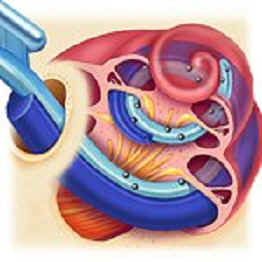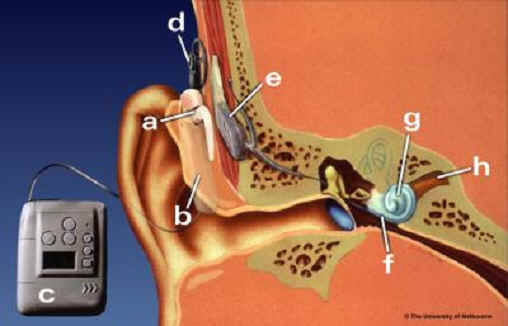


JOHN LI, M.D.
OTOLOGY NEUROTOLOGY RESOURCES
210 Jupiter Lakes Blvd #5105
Jupiter, FL 33458
Phone: (561)-748-4445
Fax: (561)-748-4449
Email: Dr-Li@Dr-Li.net
Cochlear Implantation
For many patients amplification is all that is necessary. For others, the hearing may be so poor that amplification is not adequate. Unfortunately, once the hearing nerve is permanently damaged, no magic potion or medication can bring the hair cells back to life. Until the 80's, there was nothing to do beyond conventional hearing aids. Now, there is something else to be done. One of the most exciting advances in Neurotology has been the invention of the cochlear implant. This amazing device is able to transform a person who was totally deaf to one who can converse on the telephone.
The cochlear implant is not a hearing aid. It is a surgically implantable device that stimulates the cochlear nerve directly, bypassing the dead hair cells. The cochlear implant system consists of two separate parts. The external device collects sound and transforms it into electromagnetic waves. The internal device receives these electromagnetic waves and transforms them into electrical impulses are carried by an electrode to the cochlear nerve. Stimulation of the cochlear nerve is interpreted by the brain as sound.


Implantation requires a relatively quick 1.5 hour surgical approach. (Only a handful of surgeons in FL are trained to do this.) An incision is made behind the ear. The mastoid is opened to expose the cochlea. The ICS (electronic receiver package) is embedded in a pocket just above the mastoid and then the electrode is inserted into the cochlea. Surgery is done under general anesthesia and there is usually not much postoperative pain. Recovery occurs over the course of several days. Complications are rare.
The incisions are allowed to heal for about four weeks prior to implant activation. At that time, the external processor is then placed over the ICS electronic receiver package and transmissions of sounds can begin.
It is important to realize that the surgical aspect of implantation is actually the relatively effortless part of the hearing restoration process. Extensive audiologic programming sessions are required to fine-tune the sounds so that they are appropriate and true to life. The audiologist is responsible for programming the device to transmit at the proper volume and clarity. Manipulation of the electrical impulses may help eliminate distortion. Adjustments may be required on a periodic basis.
The cochlear implant is not for everyone. It is usually reserved for people who have profound hearing loss who cannot benefit from conventional hearing aids. If they have residual natural hearing, there is a risk that placing the electrode into the cochlea may damage remaining hair cells. Candidates should be older than two years of age and the healthy enough to undergo surgery. (Audiogram Criterion typically calls for Bilateral hearing loss with speech discrimination scores of less than 40% on each side.)
Cost effectiveness:
Although cochlear implantation is very expensive, the procedure is usually covered by insurance (where as hearing aids are typically not covered by insurance). Moreover, many studies have been done to evaluate cochlear implantation's cost effectiveness and have found it worthwhile. The benefits of cochlear implantation are obvious. When one is able to make a deaf person hear, you can increase productivity, decrease dependency and improve quality of life. There is the possibility of avoiding certain life-threatening situations (by allowing a person to hear the honking of a car for instance). Since hearing is required to develop speech, it helps preserve speech function in deaf adults and allows this development of speech in young children.